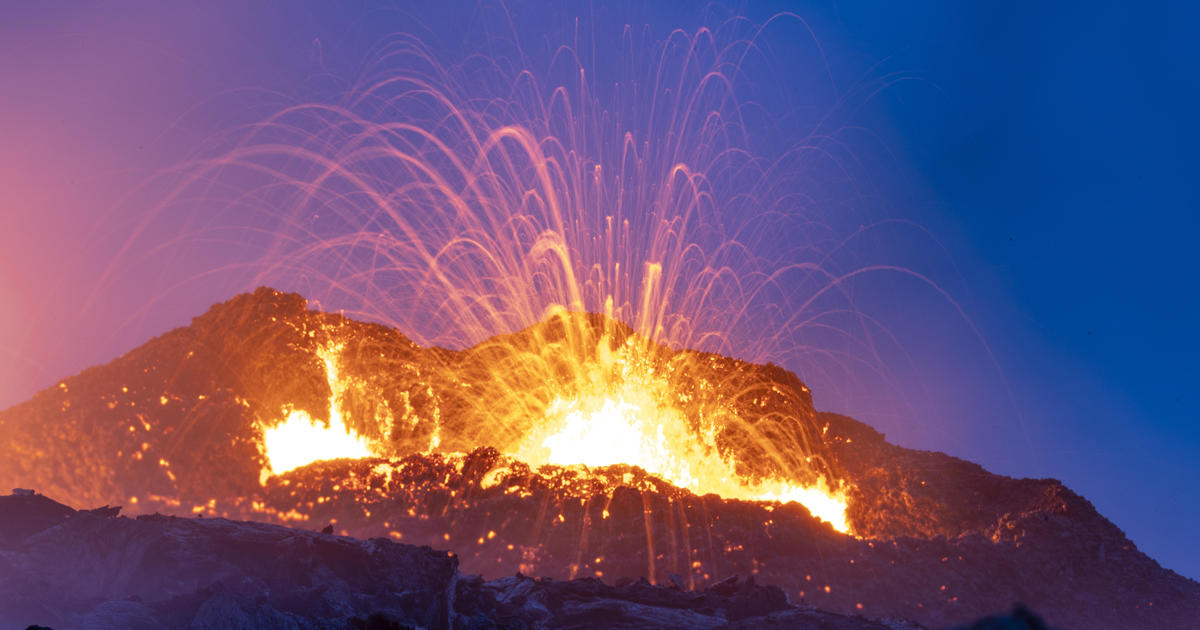Iceland is experiencing yet another volcanic eruption on its southwest peninsula.
The Icelandic Meteorological Office said Monday that a fissure broke open between the Fagradalsfjall and Keilir mountains, roughly 37 miles from the country’s capital and just a half hour from an international airport.
The eruption began at 4:40 p.m. local time on Monday, the meteorological office said, adding that it was “minor” and “small.” The fissure excreting lava is estimated to be about 200 meters, or about 656 feet long. The office said that the “lava is emerging as a series of fountains.”
However, “there is presently no emission of ash to the atmosphere,” the office said in its last update on Monday evening, adding that the eruption is occurring in a region where people do not live, ensuring “no immediate risks to communities or infrastructure.”
“The development of the eruption is presently unclear, so we advise the public not to attempt to visit the eruption area,” the office said. “Dangerously high levels of volcanic gases will accumulate close to the eruption. Further updates from IMO will be issued in the coming days.”
Eruptions are not uncommon on the European island nation. There are roughly 130 volcanoes in Iceland. While Fagradalsfjall is not known for being the most active, it has had several eruptions in recent years.
“For the third time in 3 years Earth erupts in Reykjanes,” the country’s president Guðni Th. Jóhannesson tweeted, referring to the Reykjanes peninsula on which the volcano lies. “No threat to infrastructure yet, but Civil Defence has closed off a large danger zone for the time being due to volcanic gasses.”
Fagradalsfjall erupted in early 2022, months after undergoing an “unusual eruption” in 2021.
The peninsula has been experiencing a “seismic swarm” since July 4, the meteorological office said, with at least 7,000 earthquakes recorded between Fagradalsfjall and Keilir since that time, with the largest measuring as a 4.8 on July 5. The office says the rise in activity is because of a “new dike intrusion in the area.”
IMO scientists said they saw “increasing levels of tremor” at Fagradalsfjall in the two days prior to the latest eruption, and again in the hours before it began.


